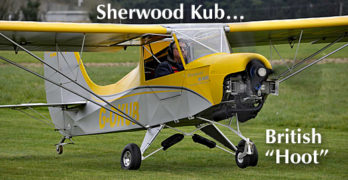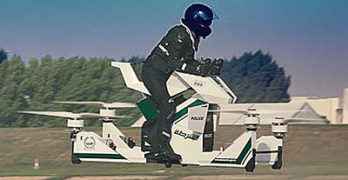You can see market numbers for the last quarter in this article — or review all LSA and Sport Pilot kit market info in this dedicated area. Get results for every American light aircraft on Tableau Public.
If you read the recent article closely, you saw that not only are single seat aircraft enjoying good sales but Part 103 ultralights may be going stronger than in many years …possibly the best ever. I wish we could report 103 ultralight market shares but as they do not have to register with (and get an N-number from) FAA, we have no third-party way to evaluate the numbers accurately.
Add the U.S. experience of the last year or three to overseas sales activity and I think most aviators around the world might be amazed at the strength of this market. Certainly, this is an under-reported category.
Search Results for : SSDR
Not finding exactly what you expected? Try our advanced search option.
Select a manufacturer to go straight to all our content about that manufacturer.
Select an aircraft model to go straight to all our content about that model.
All Carbon Fiber (Structure) Part 103 Ultralight Aircraft — Corsair is Coming to America
Most ultralight aircraft (officially: “ultralight vehicles”) are rather simple constructions. They must be to stay within the tight constraints of a 254-pound maximum empty weight.*
That’s not a negative comment about them. Actually, it’s the opposite.
To build a flying airplane that weighs less than the engine alone on a Light-Sport Aircraft, a designer has to be unusually clever.
All aircraft are constrained in weight by the laws of physics. Ultralights are further constrained by regulation.
A key way to keep an aircraft light is to keep it simple. Indeed most 103 ultralights are quite basic. However, as years passed some engineers have found intriguing solutions. I recently wrote about the composite Swan. Why not one using extensive carbon fiber?
Carbon Corsair
German developer Jörg Hollmann took a different approach, one that consumed a few years of effort.
He wanted an aircraft that resembled the famous World War II F4U Corsair fighter.
Start the Countdown: Four Years Will Bring Huge Changes to Light-Sport Aircraft
As we kick off a new year and a new decade, it feels like the starter’s timer has just been clicked into action. The next four years should prove to be highly interesting — and for all of aviation, not only Light-Sport Aircraft, Sport Pilot kit aircraft, and ultralights. Change can be difficult, but it’s coming. For the most part, I feel this is heading in a great direction even if some may struggle with elements of the new rule.
Earlier, an often-shared report discussed the changes FAA plans as part of a “deregulation” of Light-Sport Aircraft. Below, you can see a video that stimulated numerous comments.
An updated report is still being prepared from a late-fall 2019 discussion with FAA rule writers. That will be sent to LAMA members first with specific details. Other industry pros will get a simpler update so all the makers of our great aircraft can be prepared when the rule is issued no more than four years from now.
Sherwood’s Kub — Fun, Light Recreational Aircraft from Across the “Pond”
While occupied on some travel, I am pleased to provide a pilot report on a Part 103-type from across the Atlantic in the United Kingdom. Who better to report this to you than my counterpart in Britain, Dave Unwin. Dave has flown a huge number of aircraft of all sizes. When he writes about lighter aircraft, I enjoy presenting his views. Comments in italic are my amplifications. This time I present Dave’s article with minimal editing so you can enjoy his British style. This means it is longer than our usual fare but I found it a fun read and I hope you will, too…
All the great pictures were shot by photographer extraordinaire, Keith Wilson. Thanks to Dave and Keith for a great story. —DJ
As I turn onto final James Milnes’ voice suddenly crackles in my headset, “Golf Oscar Kilo Uniform Bravo, don’t forget it’s a tailwheel today!” The reason for James’ timely reminder was that when I’d flown the same aircraft a few weeks previously it had been configured as a trike, but today it’s a taildragger!
Flying SD Planes’ SD-1 Highly Affordable Single Seat Aircraft
We again have the pleasure of a flight review from British aviation journalist, Dave Unwin. Here’s his report on SD-1… —DJ
Having strapped the SD-1 on (well, that’s what it feels like) I gesture at the fuel sight tube. “Looks like around five gallons,” I said to UK agent Jiri Krajca. “So, how much playtime do I have, about an hour and a half?”
“Approximately four hours,” Jiri replied with a grin.
While some aircraft companies seem determined to price themselves out of existence it’s always refreshing to discover a new, fun aircraft that is genuinely affordable: the SD-1, which can be flown away for the equivalent of less than $30,000. In the USA, this is available as a kit that further lowers the investment (see video below).
Visually, SD-1 looks a bit like TEAM’s Mini-Max although it is actually a clean-sheet design from Igor Spacek intended to meet Britain’s SSDR rules (very similar to FAA’s Part 103).
Swan Ultralight — “Big Little Airplane” in a Tiny Box (Trailer)
For three years at Aero Friedrichshafen, the wonderful April show in the south of Germany, I have admired one genuine ultralight called Swan.
Yes, “ultralight!” Swan may not look like a U.S. “ultralight vehicle” as Part 103 rule writers deliberately named the type. Yet I use the term with care. So does the Swan producer.
The company is well aware of three national standards with which Swan neatly complies, they said: England’s SSDR or Single Seat DeRegulated, or Germany’s 120-kilogram class or FAA’s Part 103. These are all surprisingly similar (see this article for more). Swan may need to be equipped carefully to achieve this but the producer assured me it was possible.
Naturally, I get that not everyone is into ultralights and/or single seat aircraft. However, interest appears stronger than in many years. No doubt many potential buyers look closely at purchase prices they can afford while for those lucky enough to afford two airplanes, Swan could be their “sport” airplane as some spam can works to haul the family around.
Hottest Part 103 Ultralight Yet? Possibly, and Coming to America!
Two years ago at my favorite European airshow, Aero Friedrichshafen, Bill Canino of Sportair USA urged me to go look at a cool Part 103 project. With a general appearance resembling a Chance-Vought F4U Corsair military fighter, designer Jörg Hollmann‘s ultralight Corsair is reasonably authentic including its highly distinctive inverted gull wing design.
Two years ago when I saw the bare bones example — exhibited for this small shop design and manufacturing organization in BP Oil’s display stand — it was easy to get excited by the concept but less obvious to imagine how it might eventually look. At Aero 2018 the visual mystery was solved. Anyone who has admired F4U Corsair’s angular wings will be drawn to ultralight Corsair.
Even the engine mimics the original’s Pratt & Whitney R-2800 Double Wasp, except at ultralight weights and power. Jörg chose a three-cylinder Verner radial to power his diminutive aircraft.
April Foolin’? Are You Ready for Hoverbiking on Scorpion 3?
After you finish Easter Sunday dinner with the family, how about going out for a spin on your new Scorpion 3 Hoverbike? Is this merely an April fools joke?
Apparently not. Video appears to prove this machine, though with the state of the art in digital effects, anything you see can be fiction.
As many of us prepare for the start of Sun ‘n Fun 2018 in barely over one week, we hope to see numerous flying machines of interest. My visual partner, Videoman Dave and I will be onsite in Lakeland, Florida — and the following week at Aero Friedrichshafen in the south of Germany. Our mission is to collect a large batch of video that we hope will educate and entertain enthusiasts of light aviation.
I do not expect we will be covering Scorpion 3, but I have to admit I found the idea fascinating.
Swan Ultralight Goes Both Ways: Electric & Gas
In my views of Swan at previous Aero Friedrichshafen shows, the design caught my eye as it was (a) a single seater, (b) light enough to qualify as a Part 103 ultralight or its European equivalents, and (c) as it was an all-composite, nicely designed aircraft. Commonly, Part 103-capable designs are much more basic to remain within the tight limits. This statement also applies to the German 120-kilogram category or to Britain’s Single Seat DeRegulated (SSDR) description.
As Aero contributor and Powered Sport Flying publisher Roy Beisswenger and I frequently discuss, the most likely place for electric propulsion to work today is in ultralights. This is because in very light aircraft with more local flying missions, battery weights for a modest period of flying (30-60 minutes) is already achievable in the very lightest of powered aircraft. We have been discussing this with FAA for more than three years.
Aero 2017 Approaches; Remos GXiS & More
We are fast approaching an important time of year… only this year I am a bit conflicted. The good news is Sun ‘n Fun and Aero Friedrichshafen are terrific shows. I have been attending both for more years that I care to admit. (OK, I guess I don’t ming saying Aero 2016 was my 20th in a row. I’ve been going to Sun ‘n Fun so long, it makes me feel old to say how many years it has been.)
Both events are vitally important to the light aircraft space I enjoy and as steadily reported on this website. Both have strong sectors serving Light-Sport Aircraft (and in Europe, LSA-like aircraft) plus light kit-built aircraft and ultralight aircraft (in Europe called 120-kilogram class or SSDR, which means Single Seat De-Regulated).
These classes of aircraft are the ones I love to report and probably the ones you also enjoy.











